Vast, diverse, deeply spiritual and utterly unforgettable, India is unlike anywhere else on earth – a melting pot of ethnicities and religions, a treasure trove of history and culture, and a curious mixture of chaos and serenity. Stretching across more than three million square kilometres, it encompasses a staggering array of landscapes, vistas and environs, and offers unparalleled travel experiences – from the beautiful beaches of Goa, to the compelling craziness of Kolkata, the sacred Ganges river banks of Varanasi, the snow-capped peaks of the Himalayas in Kashmir and the ancient, exquisitely crafted temples dotted across the entire country. Not to mention the vibrant, friendly people, and the incredible cuisine.
India’s capital, New Delhi, lies on the Indo-Gangetic Plain, within the National Capital Territory of Delhi. Made up of the ancient walled city of Old Delhi and the more modern sector, New Delhi, the city encompasses a staggering array of beautiful buildings, including three UNESCO World Heritage Sites – the grand, sandstone Red Fort, striking Qutab Minar, and fascinating Humayun's Tomb. Architecture enthusiasts will delight in the iconic Lotus Temple. Hear ‘qawwalis’ (devotional music) at the dargah (tomb) of the Sufi saint Nizam-ud-din Auliya; or wander through the 17th century Chandni Chowk marketplace – still one of the city’s most popular retail centres today, famous for its traditional jewellery and saris. The gorgeous Sunder Nursery and Lodi Garden provide calm, flower-filled oases for picnicking.



Set on the banks of the Yamuna River in Uttar Pradesh, Agra is a beautiful city famous for its incredible Taj Mahal building, one of the seven wonders of the world. Commissioned by the Mughal emperor Shah Jahan in the 15th century as a memorial to his beloved wife Mumtaz Mahal, this is an architectural masterpiece of exquisite craftsmanship and perfect proportions. The city boasts numerous other superb attractions, including the red-hued sandstone Agra Fort, built in the 16th century; the Shahi Jama Masjid mosque, a 17th-century congregational mosque located in the historic core of Agra, and Itmad-ud-Daulah’s tomb, with its white marble facade embellished with intricate inlaid designs, also called the' Baby Taj'.
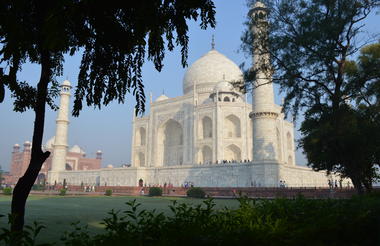
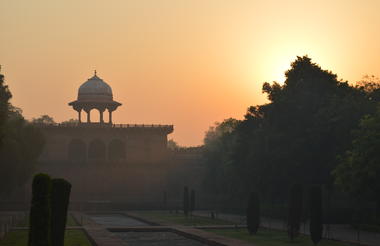
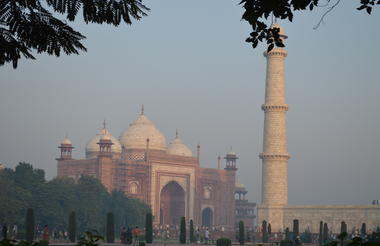
A small town in Rajasthan, Sapotara or Sapotra is close to Karauli, Bamanwas, Gangapur, and Karanpur. The primary attraction here is the historic Ramathra Fort, along with the gorgeous Kalisil Lake, and Sapotara also has a lovely little entertainment area where visitors can find excellent theaters, restaurants, and cinemas. The vast wild and open natural landscapes that surround the town offer superb hiking, star-gazing, and bird-watching opportunities (look out for kingfishers, herons, and waterfowl). Nature-lovers should also make sure to visit the enthralling Kailadevi National Park, neighbouring Daang plateau to discover several hidden shrines, Keoladeo Ghana Bird Sanctuary in Bharatpur, and Ranthambore Tiger Reserve in Sawai Madhopur. Animals to look out for in this area include several types of deer, wild boars, sloth bears, panthers, jackals, and wolves.
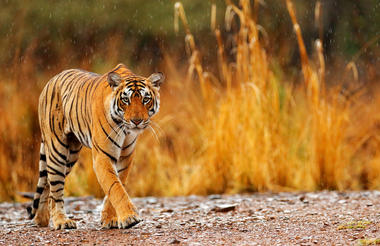
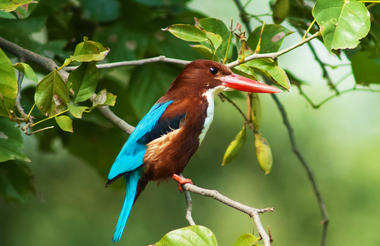
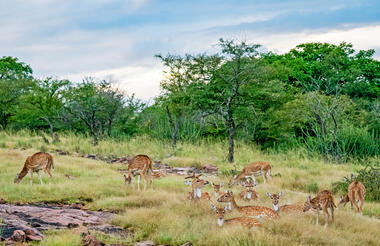
Sawai Madhopur, the lively capital city of the greater Sawai Madhopur District, rests within southeast Rajasthan, on the northern extension of the sprawling Vindhyan Plateau. The city is famous for its flourishing fauna and flora and mouth-watering cuisine. Some of the best ways to experience these local treasures include a meander through enchanting public gardens and a sample of the delicious local dishes at the numerous atmospheric restaurants. Both a history and nature enthusiasts dream, Sawai Madhopur opens a world of enjoyable excursions with some of the most notable attractions being the UNESCO World Heritage Site of Ranthambore Fort; the religiously significant Chamatkar Temple; and the remarkable Ranthambhore National Park, renowned for its abundance of free-roaming wildlife including the majestic Bengal tiger and Indian leopard.
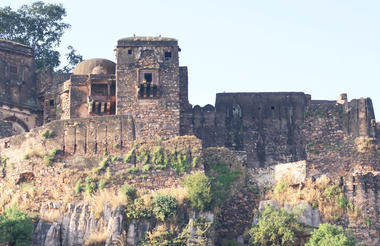
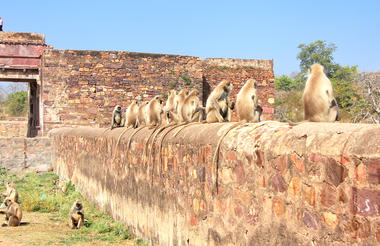
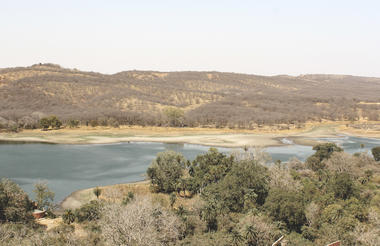
Fringed by the rugged Aravali Hills, Jaipur, nicknamed the ‘Pink City’ for its salmon-hued terracotta buildings, is the capital and largest city in the Rajasthan State. This metropolis combines tradition and modernity with its vibrant bazaars, lavish palaces, and ancient temples. Don’t miss the fairy-tale splendour of the Amber Fort, set against the backdrop of the arid landscape and hosting enthralling sound and light shows; the UNESCO-listed Jantar Mantar, a collection of 300-year-old astronomical tools which look like contemporary art; and the opulent City Palace, with its palatial structures, sprawling gardens, and atmospheric courtyards. Jaipur falls within the Golden Triangle, a popular tourist circuit, which includes Delhi, Jaipur, and Agra, and it also serves as a gateway to the neighbouring desert cities of Jaisalmer and Jodhpur.
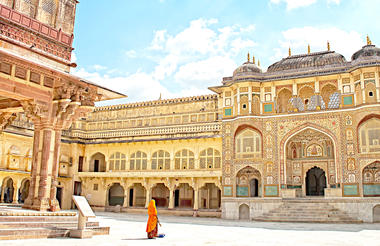


Resting on the sun-drenched plains of Rajasthan, in northwestern India, the city of Shahpura serves as a midway stopover between Jaipur and Udaipur. This city is a little oasis amidst the dry hills of Rajasthan and is a place of pilgrimage for the Ram Snehi, a spiritual and religious group with traditions originating in the early 19th century. Shahpura is primarily untouched by modernity and seems eternally preserved in time. Surrounded by over 250 small lakes, the area is a bird watching paradise and an idyllic setting for visitors to enjoy boating on Shahpura’s picturesque lake. Other attractions include: the Ramdwara Temple, an ancient place of worship; the annual Phooldol Mela, a five-day religious festival; and the ancient, crumbling Dhikhola Fort, a great location for visitors to enjoy evening sundowners with views of the expansive landscape.
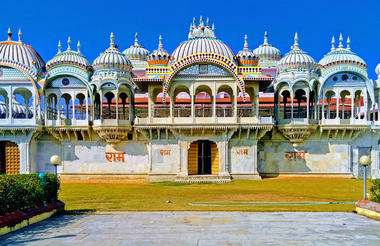
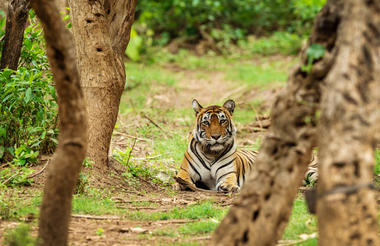
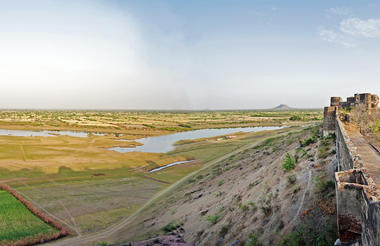
Dubbed the ‘Venice of the East’, the city of Udaipur is built around three interconnected lakes – Lake Pichhola, Fateh Sagar Lake, and the smaller Swaroop Sagar Lake – and is encircled by the hills of the Aravalli mountain range. It is home to an array of ancient temples and fairy-tale-like palaces (several of the latter have been converted into luxury heritage hotels) and is known as one of Rajasthan’s most beautiful and romantic cities. Must-see attractions include the City Palace, the Lake Palace (set on a small island in the middle of Lake Pichola), and the Udaipur Solar Observatory – Asia’s premier solar-gazing site.
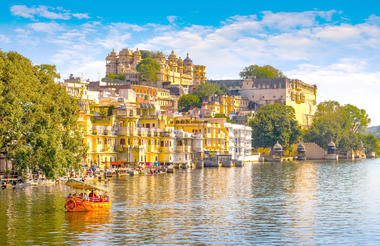
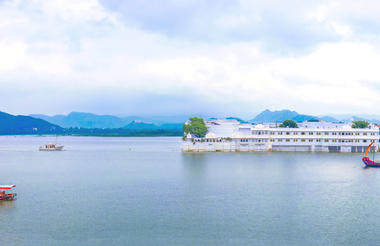
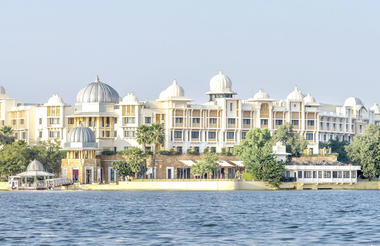
Also known as Cochin, Kochi is a city in southwest India's coastal Kerala state. This attractive city has served as a popular port for over 600 years and is known for its eclectic architecture and its array of religious monuments, museums, galleries, cafes and antique shops. The city stretches across a number of peninsulas and islands, which can be reached by a network of water taxis and bridges. The majority of Kochi’s visitor highlights can be found on the peninsula of Fort Kochi. These highlights include the St Francis Church, the oldest European-built church in India; and Mattancherry Palace, which dates back to 1557 and contains some exceptional Kerala murals and temple art. Other must-see attractions include the Kerala Folklore Museum, displaying more than 4,000 cultural and ethnic artifacts; and the 16th-century Jewish Synagogue; and the vibrant local market.



A tourist attraction in Kerala, Thekkady is a district located at the Periyar National Park. Thekkady comprises evergreen forests and savanna grasslands and is known for its natural spices such as black pepper, cardamom, cinnamon, nutmeg, ginger and clove. Elephants, tigers, sambar and many other species inhabit the park. Top attractions include the exquisite ancient Mangla Devi Temple, the aromatic Abraham’s spice garden, and the massive waterfall at the sleepy, picturesque village of Chellarkovil. Take in panoramic views of the extraordinary landscape from the Chellarkovil viewpoint, and picnic on the rolling, lush green lawns at Pandikuzhi. Don’t miss the opportunity to visit the Kadathanadan Kalari Centre, to see demonstrations of the best traditional martial arts. Thekaddy also has a rich living tribal culture.


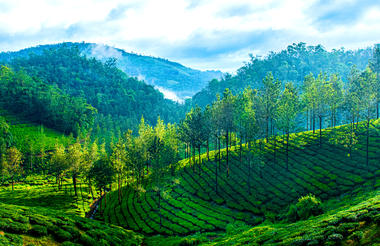
One of Kerala’s most alluring towns is Kumarakom, a hub of biodiversity where mangrove forests are mixed in with rice paddies, coconut palms, and bursts of white lilies. This vivid subtropical peninsula juts into Vembanad Lake and is a popular place to study yoga, meditation, and Ayurvedic massage, and from which to take bird-watching, boating, and fishing trips. Nearby attractions include the Aruvikkuzhi Waterfalls, just two kilometres from Kumarakoram, which cascade down the mountain slopes from roughly 30 metres above, and Pathiramanal (meaning ‘sands of midnight’) a beguiling island and bird sanctuary in the middle of the lake.
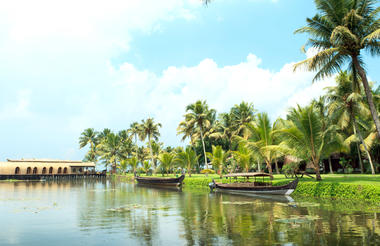
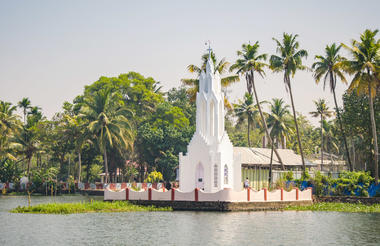

Situated only 40 km from the city of Cochin, in the Alappuzha district of Kerala, Mararikulam is a charming little coastal village known for its pristine sand beaches, swinging coconut palms, and quiet, laidback atmosphere. The village has managed to avoid the mass development associated with many of the other beach towns in the area resulting in an untouched natural environment dotted with only a handful of small resorts. The main attraction here is the exquisite Marari beach where you will find fishermen heading out daily to explore the Malabar coast, much as their ancestors have done for generations.









